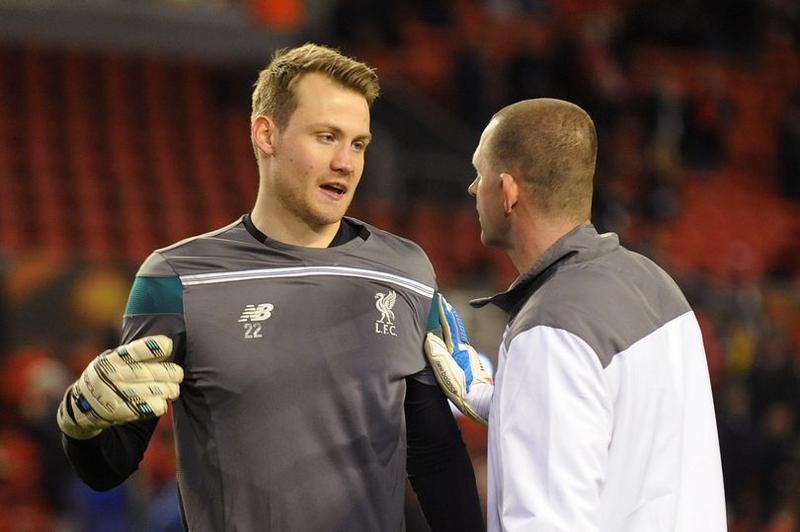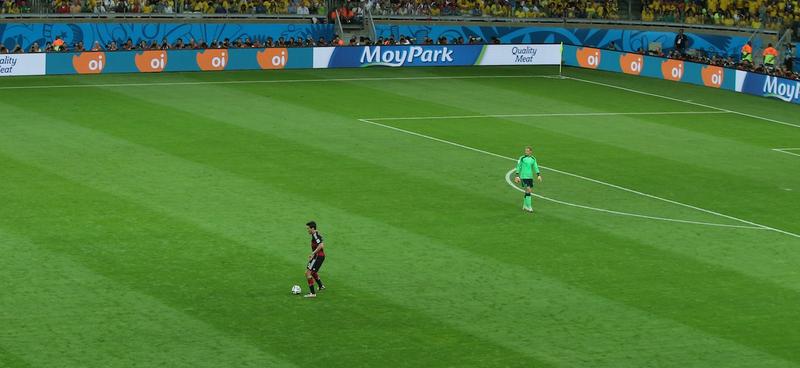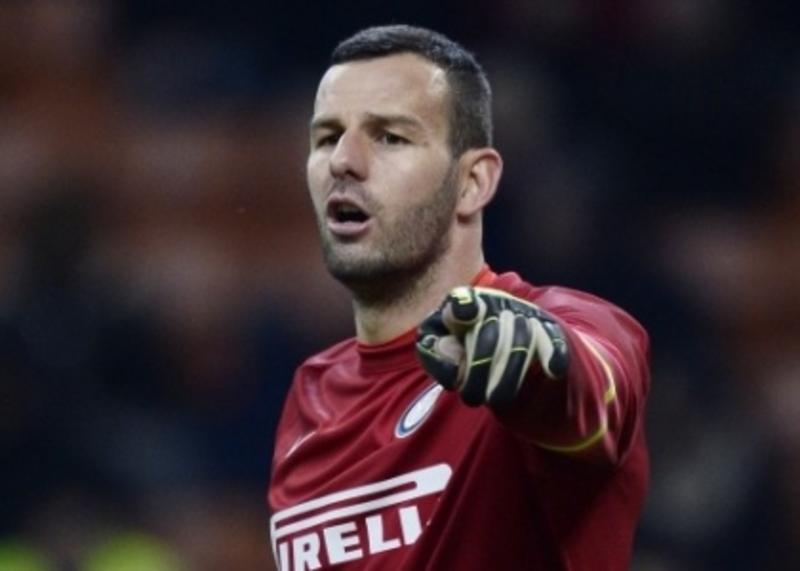FREE 3 DAY SHIPPING OVER $150. DISCOUNTED RATES BELOW $150.

- 860-904-7679
- |
- |
- |
- help
- |
- about
FREE 3 DAY SHIPPING OVER $150. DISCOUNTED RATES BELOW $150.

I consider the goalkeeper the last defender but for the sake of the article and to eliminate confusion when defender is used in the article it refers to the field player. Also all directions that are talked about in the article are as if you were in the goal so when left is said it is to the goalkeepers left as they are looking down the field.
Many areas can be examined in the 1v1 save: spacing of goalkeeper to back line, attacking player in possession of the ball, 50/50 ball, goalkeeper winning the ball outright, angle and distance the attacking player beats the last defender. I am going to go over the goalkeeper dealing with a forward who has broken down the last defender just outside of the 18 yard box and is attacking the goal while in possession of the ball.
The first area we will examine is the communication and starting spot of the goalkeeper. Once the attacking player is going at the last defender the goalkeeper needs to communicate to the defender which way they should be forcing the attacking player. Generally the goalkeeper wants to force the player further away from the goal. So if they are attacking from the right side of the goal (remember we are talking from the goalkeepers point of view) the goalkeeper would communicate to force the player to the right so if the defender is beaten the attacking player has a tougher angle to attack the goal. If a player is attacking down the center of the field at the youth level if you have not scouted the team and do not know the attacking players dominant foot the goalkeeper should force them to the right as there are less left footed players. Also at the same time the goalkeeper needs to start changing where they are standing in the goal. At this point the goalkeeper should begin to creep out of the goal (walking heal to toe of half steps) anticipating the defender getting beat so they can quickly close down space and possibly eliminate the 1v1 before it even begins.
The second area we will examine is now the defender has been beaten and the goalkeeper has creeped out but the attacking player kept good possession of the ball so the goalkeeper now must close down the space. As soon as the defender has been beaten the goalkeeper must see how far the attacking player has pushed the ball to beat the defender. At this point the goalkeeper must close down space by being in an upright sprint until the attacking player is reestablishing control of the ball. The goalkeeper must be looking at the forwards feet so when they draw back their foot to shoot they must immediately get into their set position so they can stand the shot up or move laterally. How the set position looks will depend on the distance between the goalkeeper and the attacking player if it is below 9 yards they will be in a stalk position anything above this will be a normal set position.
Now we will look at the stalk position. The stalk position is the goalkeeper having their weight on the balls of their feet with their chest slightly forward and legs under the shoulders but not wide enough for the ball to go between them and the hands down at the sides so the fingers are level with the top of the ankle and the palms are facing out and the finger are stretched out and taught. The goalkeeper is in this position because the attacking player is going to be shooting at close range and the goalkeeper is trying to be as big as possible and protect the space in tight to the legs as it is the most difficult spot to get down for a save. If the attacking player has not pulled their shot and continues to dribble in the goalkeeper will close down the space in the stalk position. When closing down the space in the stalk position the goalkeeper should have strides of heal to toe so they can get set quickly. If the goalkeeper is taking big strides and moving to fast when the attacking player pulls back their foot to shoot the goalkeeper will not be in control of their body to get into the proper stalk position.
Next we will look at the goalkeeper sliding through the ball and the attacking players feet to make the game changing save. Once the goalkeeper has gotten into the stalk position and is closing down the attacker they want to slide through the ball in between the attacking players touches. Once they have chosen the proper moment to slide through the ball the goalkeeper from their stalk position will lead with the hand and foot that is closest to the ball. All the weight will transfer to the lead foot and the goalkeeper will be low to the ground and push off this foot to drive through the ball with their hands. The trail hand (the hand further from the ball) will come across and go to the top of the ball while the lead hand will be behind the ball. The head is behind the arms with eyes on the ball and the forearms are there to protect the goalkeepers face. The goalkeeper will be diving into their armpit and hip so that they are a big barrier behind the ball. It is important that the goalkeeper pushes their body through the ball as this will make it much more difficult for the attacking player to cut around the goalkeeper and if anything is not held the ball will have a much greater chance of coming back into their body.
Sample training activities



Good luck in your goalkeeping endeavors and hopefully this will help you in making the game changing save!
Mike Bristol
Eclipse Select Elite Goalkeeping Camps
June 29- July2 Libertyville IL
July 13-16 Geneva IL
July 28-31 Tinley Park IL
August 3-6 Hinsdale IL
Private Training call (309)287-1522
Improve your skills



Improve your skills



Leave a comment